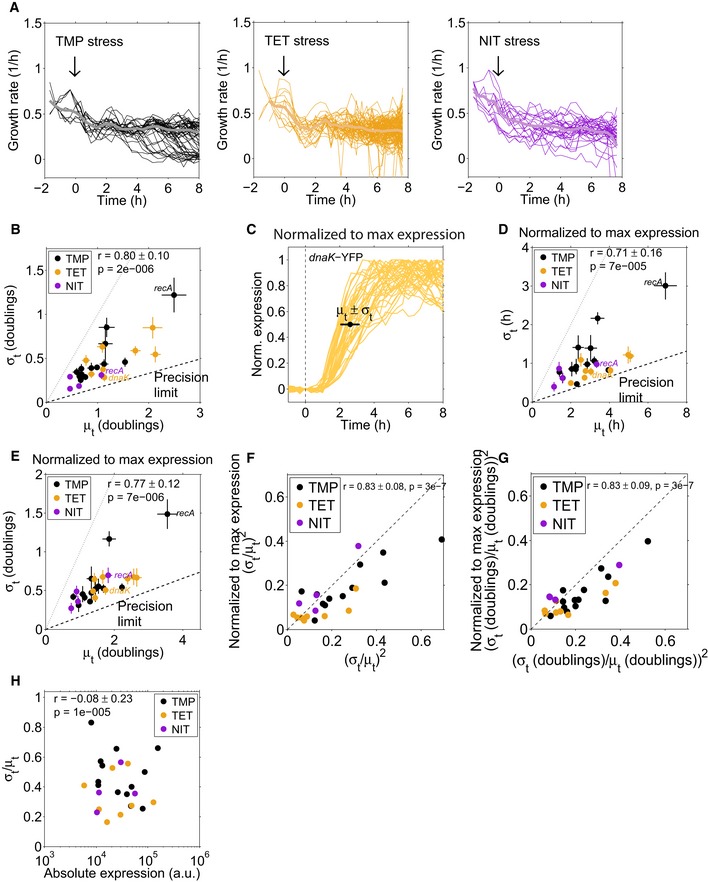Figure EV2. Growth rate fluctuations in representative microcolonies after TMP, TET, or NIT addition and their effect on timing variability determined with different response time measures.

- Instantaneous growth rates (smoothed with moving average filter of window size 3) for each condition were determined for single cells (thin lines) in a microcolony, acquired with a microfluidics system (CellASIC). The thick lines represent the mean over all depicted single cells.
- Same data as in Fig 2A, but each cell was normalized to its maximum expression level (Materials and Methods). Response times in Fig EV2D–G were defined as the time until 50% of the maximum expression level was reached for each single cell.
- Same plot as in Fig EV2F, but with the response times determined in units of the cell doubling time.
- Standard deviation divided by the mean response time over the maximal absolute expression level (obtained from population‐level measurements of the GFP‐promoter library; Mitosch et al, 2017) for individual promoters after the addition of TMP, TET, or NIT. The Pearson correlation coefficient is −0.08 ± 0.23, error and P‐value from bootstrapping (Materials and Methods).
